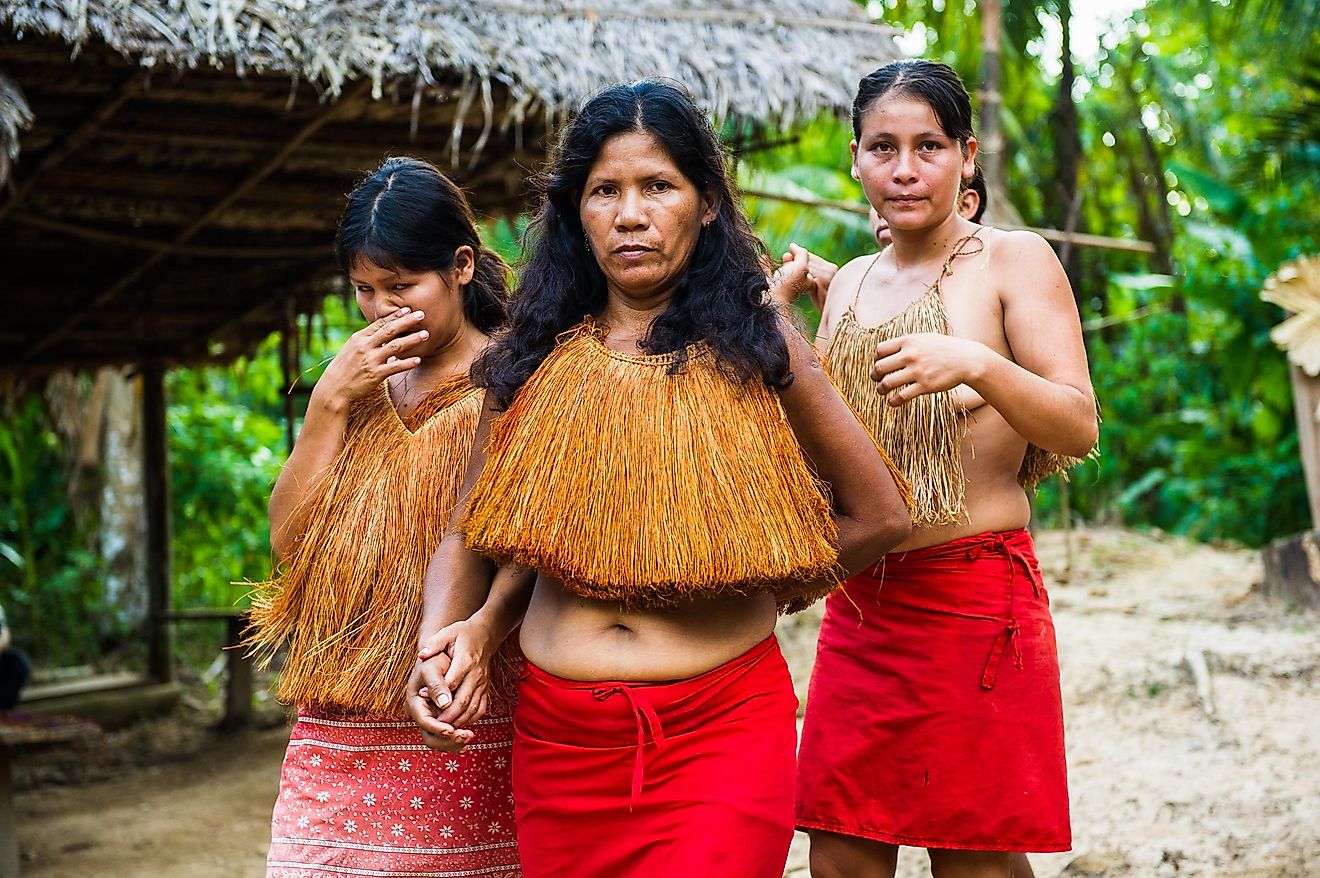10 Animals Being Exploited For Use In Alternative Medicine

Today, the species inhabiting our planet are so critically threatened that it has generated the question of whether the earth is going through its sixth mass extinction. A variety of factors like habitat destruction, persecution, poaching, climate change, and the introduction of non-native species, are triggering the loss of species. Poaching for traditional medicines is also a major cause of decimation of wild populations of a large number of threatened species.
10. Feral Water Buffaloes
Though domestic water buffaloes (Bubalus bubalis) are widespread in the world today, wild water buffaloes (Bubalus arnee), the ancestors of the domestic ones, are listed as endangered by the International Union for the Conservation of Nature (IUCN). Domestic water buffaloes are reared for their meat, hide, horn, milk, and physical strength (such as to be used in fields for plowing). Though protected by law, wild water buffaloes are also poached for their body parts. In Southeast Asia, especially in China, the horns of these animals are used for preparing traditional Chinese medicines and are regarded as alternatives to rhino horns. This has led to the extermination of large populations of wild buffaloes in South Asia and Southeast Asia and they have completely disappeared from countries like Bangladesh, Laos, and Vietnam.
9. Rhinoceroses
Today, each of the five extant species of rhinoceroses, including Indian Rhinos and White Rhinos, are threatened with extinction. One of the primary reasons responsible for this is rhino poaching for body parts that are used in alternative medical practices. Though medical researchers have found rhino horn to be composed of only keratin (a substance making up human hair and nails), the extensive use of rhino horns in traditional medical practices is still carried out. In the 1990s, China signed the CITES treaty and removed the mention of rhino horn use for medical purposes from its Chinese medicine pharmacopoeia. For a few years, rhino populations began to recover. However, the blissful situation was not to last long. Soon, a section of the Vietnamese developed a new fascination for rhino horns. A rumor about a high-profile Vietnamese official being cured of liver cancer by consuming rhino horn spread far and wide. Thus, the poaching of rhinos resumed again, now at a much faster rate.
8. Sun Bears
Sun bears (Helarctos malayanus) are another species threatened by human exploitation and greed. These bears are farmed in large numbers in China, Vietnam, South Korea, Myanmar, and Laos for their bile. The bile extracted from the gall bladders of these bears is believed to cure sore throats, gallstones, and hemorrhoids. Animal welfare organizations and animal lovers claim that these animals are treated with cruelty with no regard paid to their pain and suffering. They are stored in cramped cages for their entire lifetime where they are often unable to even straighten their backs. The surgical procedures implemented on these bears for extracting bile are usually conducted in a crude manner with little attention paid to the risks to the animal’s health from such procedures. Wild bears are also captured and killed for their gall bladder.
7. Musk Deer
Musk deer refers to the seven species of deer belonging to the genus Moschus. These deer are well-known for their musk glands that produce a sweet smelling compound called musk. For years, these deer have been poached for their musk that is used in perfumery and traditional Chinese medicines. Large populations of musk deer have been decimated in Russia and Mongolia for commercial gain. For over 5,000 years, musk has been utilized by the Chinese for treating ailments of the circulatory and nervous system and also as a sedative. Preparations of perfume also involve the use of musk. The high demand for musk in the market has led to the annual killing of over 17,000 to 20,000 musk deer stags in Russia. Currently, all the species of this deer are endangered.
6. Hawks-Bill Sea Turtles
Though the Hawks-bill sea turtles (Eretmochelys imbricata) have a widespread distribution, today they are designated as critically endangered by IUCN due to their highly reduced numbers. Extensive poaching of these turtles for their body parts is the primary reason for their demise. The shell of these turtles has been used as travel souvenirs and for making decorative items. The oil extracted from them have been used in traditional medicine in parts of Southeast Asia. A large number of turtles have also been killed as marine bycatch. Though trade in turtle parts have been banned in most parts of the world, human greed continues to threaten the survival of this species.
5. Grevy's Zebras
An endangered species of zebra, the Grévy's zebra (Equus grevyi) is the only extant wild equid living in the forests of Kenya and Ethiopia in Africa. From 15,000 Grévy's zebras in the 1970’s, the number has plummeted down to only 3,500 in the early 21st Century. The primary reasons for loss of these zebras are habitat loss and poaching. The locals persecuted the zebras to reduce the competition for food offered to their livestock by these creatures. Some ethnic populations also poach the zebras for their meat, hides, and fat. The meat and fat of these zebras are often used by traditional healers in Africa to prepare alternative medications for tuberculosis. Conservation efforts have been initiated in Kenya and Ethiopia to save these zebras and this has helped stabilize the zebra population to some extent.
4. Chinese Alligators
The Chinese alligator (Alligator sinensis) is a critically endangered species of alligator that has been hunted down over the years for its meat and organs that are believed to have cold and cancer curing abilities as per traditional Chinese medicine. These alligators are endemic to eastern China and currently have a negligible population in the wild. Large numbers of alligators are, however, bred in captivity in Chinese breeding centers where they are also used for commercial purposes. The breeding centers sell alligator meat, use alligators for tourism purposes, and also sell live alligators to the European pet market.
3. Banteng Feral Cattle
The wild banteng (Bos javanicus) is an endangered species of wild cattle native to Southeast Asia. Though domesticated banteng populations are large, the population population of wild bantengs is only around 2,000 to 5,000. For years, the bantengs have been hunted for their meat and other body parts and like many other wild species of Southeast Asia, the banteng body parts have often been utilized for traditional remedies.
2. Asian Tigers
Tigers in Asia have undergone a drastic decline in numbers, and every species of tiger is either critically endangered or endangered with only a few hundred to a few thousand individuals of each species remaining in the wild. Though habitat loss has been one of the primary factors driving these tiger species to extinction, poaching for tiger parts is another major cause of worry. Every part of the tiger, its bones, claws, hides, and teeth have been used in alternative medicine preparations, especially Chinese traditional medicine. According to the traditional healers , the medicine made from tiger parts is believed to cure a range of disorders including toothaches. However, modern medical research resents such claims. Tigers, though protected in all places they inhabit, are still subject to illegal poaching activities. The lure for money and human greed thus continue to threaten the Asian tigers.
1. Asian Elephants
Unlike all African elephants, only a few Asian elephant males have long tusks. Thus, one would assume that the Asian populations are relatively immune to poaching. However, this is far from the truth. Humans have also managed to decimate Asian elephant populations by poaching them for their meat, hide, and other body parts. In Myanmar, a paste is made from pieces of elephant foot and is used as an alternative medicine to treat hernias. Illegal hunting and poaching of these animals, accompanied by habitat loss and degradation, has thus led to the decimation of Asian elephant populations. These elephants are now classified as endangered by the IUCN.











